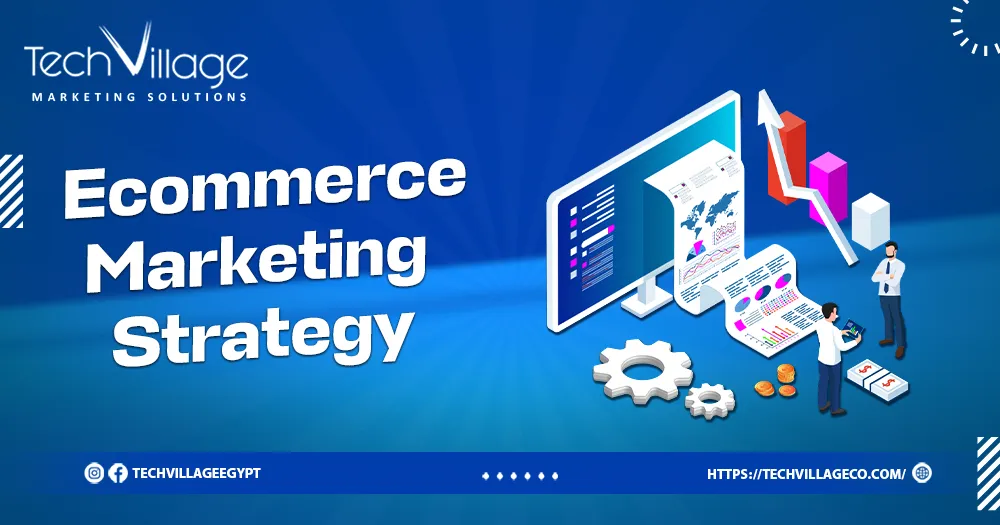In the dynamic realm of digital commerce, crafting an effective marketing strategy is paramount for success. ecommerce marketing strategy involves a multifaceted approach to attract, engage, and convert online shoppers. From leveraging social media and search engine optimization to optimizing user experience.
A well-crafted strategy is essential to navigate the competitive landscape and drive sustainable growth in the ever-evolving world of online business. This introduction explores the key components and considerations that underpin a successful ecommerce marketing strategy.
Table of Contents
ToggleWhat Is Ecommerce Marketing?
ecommerce marketing strategy refers to the set of strategies and techniques employed to promote and sell products or services online. It encompasses a broad range of activities aimed at attracting, engaging, and converting potential customers in the digital space.
Key components include online advertising, search engine optimization (SEO), social media marketing, email campaigns, and user experience optimization. The goal of ecommerce marketing strategy is not only to drive traffic to an online store but also to enhance the overall online shopping experience, foster customer loyalty, and ultimately maximize sales in the competitive world of electronic commerce.
Get to know: What Is Google Trends In Digital Marketing.
E-commerce Advertising vs. E-commerce Marketing
E-commerce advertising and ecommerce marketing strategy are closely related but distinct concepts within the realm of online business.
E-commerce advertising specifically focuses on promoting products or services through paid channels to reach a target audience.
This includes activities like paid search advertising, display ads, social media advertising, and influencer partnerships. The primary goal is to generate immediate visibility and drive traffic to the online store, ultimately leading to sales.
On the other hand, ecommerce marketing strategy is a broader term encompassing a comprehensive set of strategies to promote, sell, and grow an online business. It includes not only advertising but also organic tactics such as search engine optimization (SEO), content marketing.
Email campaigns, and social media engagement. ecommerce marketing strategy involves a holistic approach to building brand awareness, fostering customer relationships, and optimizing the overall online shopping experience.
Read also: Best Digital Marketing Agency In Cairo.
E-commerce Marketing Types
ecommerce marketing strategy encompasses various types of strategies aimed at promoting and growing online businesses. Here are some key types:
1. Search Engine Optimization (SEO):
Optimizing the online store’s content to rank higher in search engine results, increasing visibility and organic traffic.
2. Social Media Marketing:
Leveraging platforms like Facebook, Instagram, Twitter, and others to connect with the audience, build brand awareness, and drive traffic to the online store.
3. Email Marketing:
Utilizing email campaigns to nurture leads, engage customers, and promote products through newsletters, personalized offers, and updates.
4. Content Marketing:
ecommerce marketing strategy creating and sharing valuable content (blog posts, articles, videos) to attract and educate the target audience, establishing the brand as an authority in its niche.
5. Paid Advertising:
Running paid campaigns through channels like Google Ads, Facebook Ads, or other platforms to directly promote products and reach a targeted audience.
Get to know: What Is Google Trends In Digital Marketing.
6. Influencer Marketing:
Collaborating with influencers in the industry to promote products to their audience and leverage their credibility and reach.
7. Affiliate Marketing:
Partnering with affiliates who promote the products and earn a commission for each sale generated through their unique referral links.
8. User Experience Optimization:
ecommerce marketing strategy Enhance the online shopping experience through website design, user interface improvements, and streamlined checkout processes to increase customer satisfaction and retention.
9. Retargeting:
Displaying ads to users who have previously visited the online store, encouraging them to return and complete a purchase.
10. Mobile Marketing:
Tailoring strategies for mobile users, considering mobile-friendly website design, and utilizing mobile apps for a seamless shopping experience.
Read also: Ecommerce Website Dubai.
10 ecommerce marketing strategies
Creating a ecommerce marketing strategy requires many sequential steps, and among the ecommerce marketing strategy that are created are the following:
1. Referral Programs:
Encourage your existing customers to refer friends and family by offering incentives like discounts or exclusive access, expanding your customer base through word-of-mouth.
2. User-Friendly Mobile Experience:
Ensure your e-commerce site is mobile-friendly, providing a seamless shopping experience on smartphones and tablets to cater to the growing mobile user base.
3. Flash Sales and Limited-Time Discounts:
Create a sense of urgency by running flash sales or offering limited-time discounts to entice customers and drive quick conversions.
4. Cross-Selling and Upselling:
ecommerce marketing strategy Implement strategies to suggest complementary products (cross-selling) or encourage customers to upgrade to a higher-value item (upselling) during the checkout process.
5. Video Marketing:
Create engaging product videos, tutorials, and behind-the-scenes content to showcase your brand and products across platforms like YouTube and social media.
Here’s: The Important Of Automotive Digital Marketing Strategy
6. Chatbots and Live Chat:
Use AI-driven chatbots or live chat features on your website to provide instant customer support, answer queries, and guide visitors through the buying process.
7. Influencer Partnerships:
Collaborate with influencers or micro-influencers in your niche to leverage their audience and promote your products authentically.
8. Personalized Email Marketing:
Implement personalized email campaigns based on customer behavior, preferences, and purchase history to enhance customer engagement and encourage repeat business.
9. Customer Reviews and Testimonials:
ecommerce marketing strategy encourages and showcases positive reviews to build trust and credibility, influencing potential customers.
10. Retargeting Campaigns:
Use targeted ads to re-engage visitors who have previously interacted with your website but haven’t made a purchase, encouraging them to return and complete the transaction.
Read also: Ecommerce Recommendations.
Creating an ecommerce Marketing Strategy
If you want to create an ecommerce marketing strategy , here are the most prominent steps that you can follow provided by tech village:
- Define Your Target Audience: Identify your ideal customers to tailor your marketing messages effectively.
- Competitor Analysis: Understand your competitors to identify unique selling points and areas for improvement.
- Establish Clear Goals: Set measurable objectives such as sales targets, customer acquisition, or brand awareness.
- Optimize Website and User Experience: Ensure your ecommerce marketing strategy is user-friendly, mobile-responsive, and optimized for search engines.
- Content Marketing: Develop high-quality, relevant content to attract and engage your audience. Include product descriptions, blog posts, and multimedia.
- Email Marketing: Build an email list and create targeted campaigns for promotions, product launches, and customer engagement.
- SEO Strategies: Optimize your ecommerce marketing strategy for search engines to increase visibility.
- Paid Advertising: Invest in online advertising through platforms like Google Ads, Facebook Ads, or Instagram Ads to reach a broader audience.
- Loyalty Programs: Encourage repeat business by implementing loyalty programs, discounts, or exclusive offers for existing customers.
- Influencer Marketing: Collaborate with influencers who align with your brand to reach their followers and build credibility.
Conclusion
In conclusion, the landscape of ecommerce marketing strategy is marked by its dynamic nature and constant evolution. A successful strategy requires a delicate balance between understanding consumer behavior, harnessing the power of digital channels, and adapting to emerging trends. As technology continues to shape the way we shop online, staying agile and data-driven remains crucial. ecommerce marketing strategy businesses that consistently refine their marketing strategies, prioritize customer experience, and embrace innovation are better positioned to thrive in this competitive arena. The journey doesn’t end with a strategy; it’s an ongoing process of adaptation and refinement to meet the ever-changing demands of the digital marketplace.
FAQ
What Is an E-Commerce Platform?
An e-commerce platform is a digital framework or software solution that enables businesses to create, manage, and operate online stores. It serves as the foundation for conducting electronic commerce by providing tools and features to showcase products, process transactions, and handle various aspects of online business operations. E-commerce platforms typically include functionalities such as product catalog management, secure payment processing, order fulfillment.
What are the strategies of advertising in e commerce?
Advertising in e-commerce involves a multifaceted approach to attract and convert customers. Key strategies include leveraging social media platforms for targeted ads and influencer marketing to tap into engaged audiences. Search engine advertising, using platforms like Google Ads, ensures visibility in search results. Content marketing, through blogs and videos, establishes brand authority. Personalized email campaigns based on customer behavior are crucial.

 AR
AR





